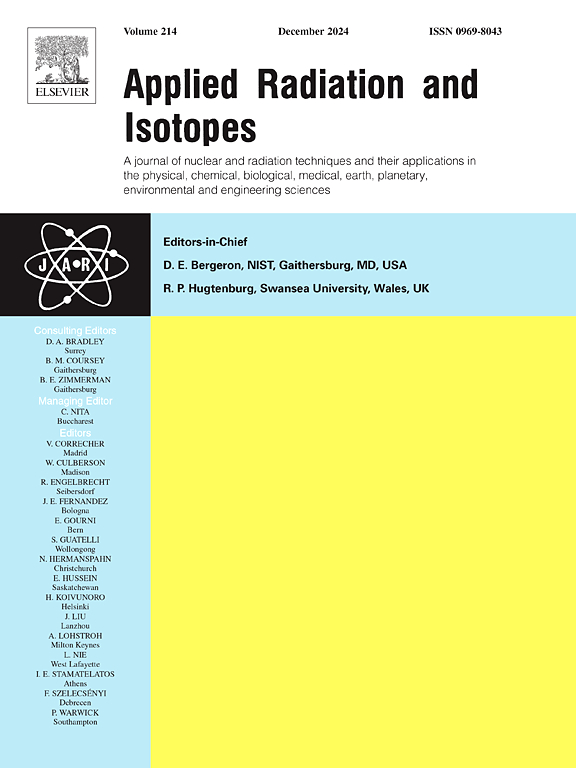Enhancing durum wheat growth and productivity in arid soils via seed irradiation with gamma rays and the foliar application of nano Cu
IF 1.6
3区 工程技术
Q3 CHEMISTRY, INORGANIC & NUCLEAR
引用次数: 0
Abstract
The current study aims at increasing durum wheat productivity under arid-conditions via following two strategies: seed irradiation with γ-rays and spraying plants with nano Cu. Wheat seeds were irradiated in a60Co Gamma Irradiation Unit to achieve 0Gy (R0), 50Gy (R50),100Gy (R100), 150Gy (R150) and 200Gy (R200), while nano Cu-was prepared in lab. A field study of a split-plot design was then conducted for 2-seasons, in which foliar applications with nano-Cu were applied in main plots i.e. 30 (nCu30), 60 (nCu60) and 90 mg Cu L−1 (nCu90) versus the recommended Cu-mineral dose (Cu60) while irradiated seeds were applied in subplots. The obtained results showed that the highest increases in wheat growth and yield were attained for Cu60. Comparable increases in grain yield were noticed for nCu60 foliar application. Likewise, γ-irradiation (≤150Gy) effectively enhanced wheat growth and productivity. Generally, wheat growth parameters and productivity were correlated significantly and positively with plant uptake of Cu, N, Fe, Zn and Mn. Concerning combination between these two factors, the highest increase in grain yield was noted for R150nCu90, recording 4.7 and 5.5 Mg ha−1 in the first and second seasons respectively. These yields were over 20 % higher than R0Cu60 treatment in the two seasons of study. We concluded that seed irradiation with γ-rays up to 150 Gy and nano-Cu spray (nCu60) is guaranteed to increase wheat productivity grown on arid soils.
求助全文
约1分钟内获得全文
求助全文
来源期刊

Applied Radiation and Isotopes
工程技术-核科学技术
CiteScore
3.00
自引率
12.50%
发文量
406
审稿时长
13.5 months
期刊介绍:
Applied Radiation and Isotopes provides a high quality medium for the publication of substantial, original and scientific and technological papers on the development and peaceful application of nuclear, radiation and radionuclide techniques in chemistry, physics, biochemistry, biology, medicine, security, engineering and in the earth, planetary and environmental sciences, all including dosimetry. Nuclear techniques are defined in the broadest sense and both experimental and theoretical papers are welcome. They include the development and use of α- and β-particles, X-rays and γ-rays, neutrons and other nuclear particles and radiations from all sources, including radionuclides, synchrotron sources, cyclotrons and reactors and from the natural environment.
The journal aims to publish papers with significance to an international audience, containing substantial novelty and scientific impact. The Editors reserve the rights to reject, with or without external review, papers that do not meet these criteria.
Papers dealing with radiation processing, i.e., where radiation is used to bring about a biological, chemical or physical change in a material, should be directed to our sister journal Radiation Physics and Chemistry.
 求助内容:
求助内容: 应助结果提醒方式:
应助结果提醒方式:


